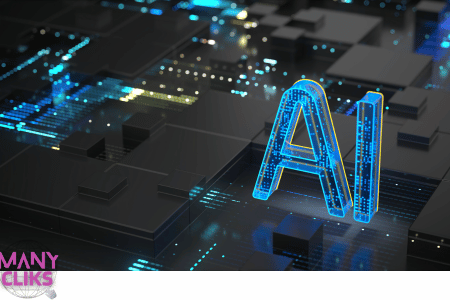
Throughout this journey, we will explore the key elements that enable ChatGPT to deliver intelligent and captivating conversations. From programming languages to libraries and frameworks, we’ll equip you with the necessary tools to unleash the full potential of ChatGPT. Whether you’re a developer looking to build interactive chatbots or a content creator seeking to enhance your engagement, this guide will provide you with the knowledge and insights to achieve success.
Summary of Content
By the end, you’ll have the expertise to set up ChatGPT like a pro and create engaging and dynamic conversations that leave a lasting impression. Let’s unlock the power of AI conversation together and revolutionize the way we interact. Are you ready? Let’s dive in!
1. Programming Languages: Building the Foundation
Which programming languages are crucial for ChatGPT development?
- Python: As one of the most widely used languages in AI, Python provides a robust and flexible framework for ChatGPT development. Its extensive libraries, such as TensorFlow and PyTorch, enable efficient natural language processing and machine learning capabilities.
- JavaScript: With its focus on web development, JavaScript is essential for building interactive and user-friendly chatbots. Its versatility allows for seamless integration of ChatGPT into web applications, enabling real-time conversations and dynamic user experiences.
You Might Like:
How does each language contribute to the creation of intelligent chatbots?
- Python: Python’s simplicity and readability make it ideal for implementing complex algorithms and training machine learning models. It provides efficient data manipulation and powerful libraries for natural language processing, enabling ChatGPT to understand and generate human-like text responses.
- JavaScript: JavaScript excels in creating engaging user interfaces and enabling interactive chatbot experiences. It empowers developers to handle user input, display dynamic content, and integrate ChatGPT into websites and messaging platforms for seamless conversations.
2. Data Preparation: Fueling ChatGPT’s Intelligence
- What role does data preparation play in enhancing ChatGPT’s performance?
- Data preparation is crucial in improving GPT’s performance. By cleaning, preprocessing, and tokenizing the data, we can ensure that the model receives high-quality input, leading to more accurate and coherent responses.
- For example, in Python, we can use the
nltklibrary to perform data cleaning tasks such as removing stopwords, punctuation, and special characters. The following command demonstrates how to tokenize a sentence usingnltk:
from nltk.tokenize import word_tokenize
sentence = "Hello, how are you?"
tokens = word_tokenize(sentence)
print(tokens)Output: ['Hello', ',', 'how', 'are', 'you', '?']
- How can you shape training data to optimize GPT’s understanding and responsiveness?
- To optimize GPT’s performance, shaping the training data is essential. This involves selecting relevant and diverse datasets, balancing positive and negative examples, and fine-tuning the data to align with the desired context or task.
- For instance, if we want GPT to excel in customer support, we can curate a dataset of customer inquiries and corresponding responses. By ensuring the dataset covers various scenarios and customer needs, we can train ChatGPT to be more effective in addressing customer queries.
3. Computational Resources: Powering ChatGPT’s Potential
What are the computational resources required for training and deploying ChatGPT?
- Depending on the scale of the project. It can range from local machines to cloud infrastructure or dedicated AI platforms.
- For example, if you choose to train GPT on a local machine, you would need a machine with sufficient CPU and GPU capabilities. You can use libraries like TensorFlow or PyTorch to leverage the computational power of these resources. Here’s an example command to check the availability of GPUs in TensorFlow:
import tensorflow as tf
gpu_available = tf.test.is_gpu_available()
print("GPU available:", gpu_available)Output: GPU available: True
How can you allocate resources efficiently for maximum performance?
- Efficient resource allocation is crucial for maximizing performance. If using cloud infrastructure, you can choose services like AWS EC2 or Google Cloud VMs, selecting instance types that match your computational requirements.
- Additionally, dedicated AI platforms such as OpenAI’s GPT-3 offer pre-trained models and APIs, eliminating the need for extensive training. These platforms provide scalability and on-demand resource allocation, making it easier to deploy and manage ChatGPT.
- By utilizing resources effectively and choosing the right infrastructure for training and deploying GPT, you can optimize performance, reduce costs, and achieve faster and more efficient results.
4. Pre-trained Models and Frameworks: Accelerating Development
- How can pre-trained models and frameworks enhance the development process?
- Pre-trained models and frameworks provide a significant boost to the development process by offering a foundation of knowledge and functionality. They are trained on large-scale datasets and have learned patterns, relationships, and context from a vast amount of text data.
- For instance, models like GPT-3 (Generative Pre-trained Transformer 3) and BERT (Bidirectional Encoder Representations from Transformers) have achieved remarkable results in natural language processing tasks. They can understand and generate text, perform sentiment analysis, answer questions, and more.
- How can you leverage these pre-built resources to expedite development and enhance GPT’s capabilities?
- By leveraging pre-trained models and frameworks, developers can save time and effort in training models from scratch. These resources serve as a starting point, allowing developers to fine-tune and customize the models for their specific use cases.
- For example, you can use the Hugging Face library, which provides pre-trained models like GPT-3 and BERT, along with a comprehensive set of tools and APIs. Here’s an example command to load a pre-trained GPT-3 model using the Hugging Face Transformers library in Python:
from transformers import GPT3Tokenizer, GPT3Model
# Load pre-trained GPT-3 tokenizer and model
tokenizer = GPT3Tokenizer.from_pretrained("gpt3")
model = GPT3Model.from_pretrained("gpt3")By leveraging these pre-built resources, developers can expedite development, enhance ChatGPT’s capabilities, and focus on fine-tuning the models for specific tasks or domains.
Conclusion: Embrace the Future of AI Conversation

Congratulations! You have gained valuable insights into the essential tools and resources required to set up ChatGPT effectively. Now, it’s time to put this knowledge into action and unleash the power of AI conversations. As you embark on your own AI journey, make sure to stay connected and engaged with the AI community for ongoing learning and collaboration.
Don’t forget to follow @Manycliks on Instagram (@manycliks) for more insightful tips and updates. If you’re ready to take your AI conversations to the next level, feel free to reach out for our services. Together, let’s create captivating and intelligent interactions that leave a lasting impact on your audience. Let’s dive into the exciting world of ChatGPT and revolutionize the way we communicate.







